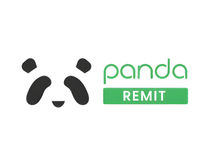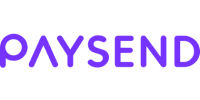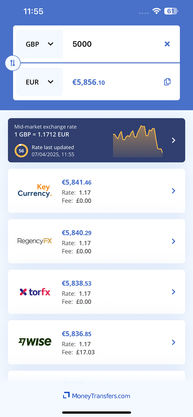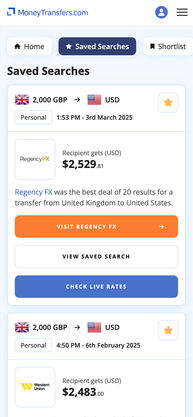Find the best ways to transfer money to Nepal
Compare money transfer deals for sending NPR.
Find the best, cheapest, and easiest ways to send money to Nepal at the best NPR exchange rates.
Read on for the best deals, expert information, and all you need to transfer money to Nepal.
Send money to Nepal
"Over 16 million customers use Wise, mostly for their excellent mobile app, transparent fee structure & use of mid-market rates. Now increasingly used for larger transfers."
"Over 16 million customers use Wise, mostly for their excellent mobile app, transparent fee structure & use of mid-market rates. Now increasingly used for larger transfers."
"Over 16 million customers use Wise, mostly for their excellent mobile app, transparent fee structure & use of mid-market rates. Now increasingly used for larger transfers."
"Xe has over 30 years of currency exchange experience, and is one of the most reputable names on the market. 200 countries, 100 currencies, & funds often received in seconds."
"Xe has over 30 years of currency exchange experience, and is one of the most reputable names on the market. 200 countries, 100 currencies, & funds often received in seconds."
"Xe has over 30 years of currency exchange experience, and is one of the most reputable names on the market. 200 countries, 100 currencies, & funds often received in seconds."
"Over 16 million customers use Wise, mostly for their excellent mobile app, transparent fee structure & use of mid-market rates. Now increasingly used for larger transfers."
"Over 16 million customers use Wise, mostly for their excellent mobile app, transparent fee structure & use of mid-market rates. Now increasingly used for larger transfers."
"Over 16 million customers use Wise, mostly for their excellent mobile app, transparent fee structure & use of mid-market rates. Now increasingly used for larger transfers."
"Revolut has 50+ million customers globally. You can hold up to 36 currencies in the app and send money quickly in 70+ currencies to 160+ countries."
"Revolut has 50+ million customers globally. You can hold up to 36 currencies in the app and send money quickly in 70+ currencies to 160+ countries."
"Revolut has 50+ million customers globally. You can hold up to 36 currencies in the app and send money quickly in 70+ currencies to 160+ countries."
"24/7 live chat support provided in six languages. Special first transfer rates available, with airtime topup supported to many countries in Africa, Asia and South America."
"24/7 live chat support provided in six languages. Special first transfer rates available, with airtime topup supported to many countries in Africa, Asia and South America."
"24/7 live chat support provided in six languages. Special first transfer rates available, with airtime topup supported to many countries in Africa, Asia and South America."
"Xe has over 30 years of currency exchange experience, and is one of the most reputable names on the market. 200 countries, 100 currencies, & funds often received in seconds."
"Xe has over 30 years of currency exchange experience, and is one of the most reputable names on the market. 200 countries, 100 currencies, & funds often received in seconds."
"Xe has over 30 years of currency exchange experience, and is one of the most reputable names on the market. 200 countries, 100 currencies, & funds often received in seconds."
"Remitly focuses on sending money to friends and family in Asia, Africa and South America. Wide coverage and well-suited to regular transfers home."
"Remitly focuses on sending money to friends and family in Asia, Africa and South America. Wide coverage and well-suited to regular transfers home."
"Remitly focuses on sending money to friends and family in Asia, Africa and South America. Wide coverage and well-suited to regular transfers home."
"Xoom, a PayPal service, allows you to send money in more than 160 countries. You can send cash for over-the-counter pickup or home delivery, as well as send by bank transfer or debit card."
"Xoom, a PayPal service, allows you to send money in more than 160 countries. You can send cash for over-the-counter pickup or home delivery, as well as send by bank transfer or debit card."
"Xoom, a PayPal service, allows you to send money in more than 160 countries. You can send cash for over-the-counter pickup or home delivery, as well as send by bank transfer or debit card."
"Sendwave is trusted by over 1 million users across the US, UK, Canada and EU. 24/7 support is available online and via the app."
"Sendwave is trusted by over 1 million users across the US, UK, Canada and EU. 24/7 support is available online and via the app."
"Sendwave is trusted by over 1 million users across the US, UK, Canada and EU. 24/7 support is available online and via the app."
"Send money to over 40 destinations online and in the mobile app."
"Send money to over 40 destinations online and in the mobile app."
"Send money to over 40 destinations online and in the mobile app."
"Paysend has transparent fees and rates, with transfer sent within seconds to your recipient's bank. They also have global 24/7 support for any enquiries, and bank-level security."
"Paysend has transparent fees and rates, with transfer sent within seconds to your recipient's bank. They also have global 24/7 support for any enquiries, and bank-level security."
"Paysend has transparent fees and rates, with transfer sent within seconds to your recipient's bank. They also have global 24/7 support for any enquiries, and bank-level security."
"Moneygram is a well established service with over 80 years in the sector. They support over 200 countries worldwide and have over 440,000 retail locations."
"Moneygram is a well established service with over 80 years in the sector. They support over 200 countries worldwide and have over 440,000 retail locations."
"Moneygram is a well established service with over 80 years in the sector. They support over 200 countries worldwide and have over 440,000 retail locations."
How to get the best rate for money transfers to Nepal
Always compare rates
Don't pay more than you need to. Use our live comparison tool to ensure you aren't missing the best NPR rates.
Choose a provider
Select the provider that fits your transfer needs and will get you the most NPR for the lowest fee.
Click, sign up & send
Follow the steps & make your transfer. Your NPR will soon reach the recipient.
We found Wise to be the best way to send money to Nepal.
After testing and reviewing 10 money transfer providers servicing Nepal, Wise came out on top.
Wise offers quick transfers, adds a 0.13% markup on NPR transfers, and costs $68.4 in fees.
This makes it the best option for a mix of cost, speed & features for NPR transfers.
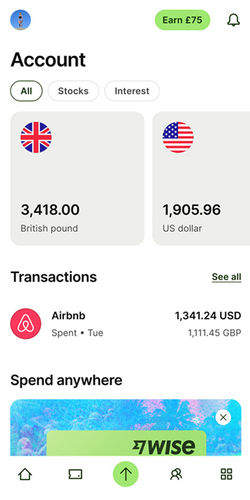
Wise: The cheapest way to send money to Nepal
Wise charges $68.4 per transfer to Nepal, with a 0.13% markup on the NPR exchange rate. This is 0.01% cheaper than the second cheapest option.
To get the most out of your transfer to Nepal, use a bank transfer deposit to maximize the amount of NPR received.

The fastest way to send money to Nepal: Xe
Based on a $7,000 transfer and our comparison data for NPR transfers, Xe is the quickest option for sending NPR to Nepal.
With Xe, the transfer time to Nepal is minutes - 24 hours.
They charge $0 in fees and apply a 1.29% markup on the ‘real’ NPR rate. This is 0% cheaper than the second-best provider.
For the best balance between speed and cost, we suggest using a deposit for Nepalese Rupee transfers.
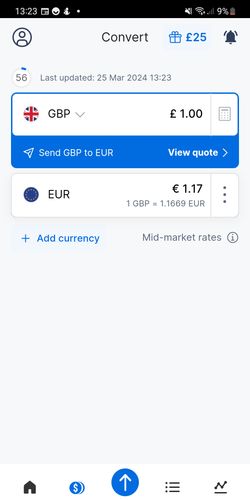
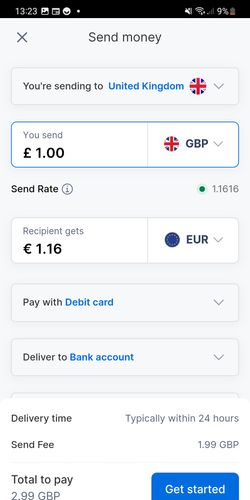
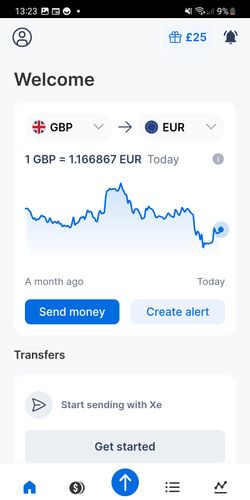
Easiest way to send money to Nepal: Wise
We recommend Wise if you are after convenience. Their app is made for NPR transfers on the go, their fees are low, and transfer times are fast.
They may not always be the cheapest or the fastest for transfers to Nepal, but the difference would be minimal, especially on smaller NPR transfers.
By “easiest”, we mean the service that is easy to get started with, is fully transparent, and offers a good balance of cheap and fast transfers.

Consider this before sending money to Nepal
Don't settle for the first option. Always compare ways to send money to Nepal to find out about fees, speed, and reliability.
Our analysis included 10 providers that operate in Nepal.
Through this, you get a comprehensive view of all the options you have when sending money to Nepal.
Making large money transfers to Nepal
When sending large amounts of Nepalese Rupee to Nepal, it's important to consider factors like the limits, NPR rates, customer support, as well as legal and government-imposed restrictions in Nepal.
Wise is our top recommendation for moving large amounts of NPR.
Whether you're purchasing property in Nepal, need to pay tuition fees, have a wedding there, or transfer money for business in Nepal, Wise will ensure a smooth and secure transaction.
Of all the companies we’ve tested and reviewed that specialize in large NPR transfers, Wise consistently ranked as the top-rated choice.
They charge $68.4 per transfer and apply 0.13% markup on top of the NPR exchange rate, making them perfect for moving big amounts.

The costs of sending money to Nepal
The cost of NPR transfers depends on where your location, amount, funding and withdrawal methods, transfer fees, and the markup added on top of the NPR exchange rate.
Exchange rate markup
The exchange rate markup is the percentage added to the mid-market rate (the "real" NPR rate) by the service provider.
For example, Wise offers one of the best exchange rates by applying a 0.13% markup on the USD-NPR exchange rate.
This means you receive 143.8527 NPR - 0.13% for every US Dollar sent.
Transfer fees
Transfer fees to Nepal can be either fixed, percentage-based, or a combination of both.
Suppose you want to send $7,000 to Nepal (NPR).
After analyzing 10 services supporting NPR, Remitly appears to have the lowest fee of $68.4 per transfer to Nepal.
Deposit method
The way you fund your NPR transfers can significantly affect the cost.
bank transfer is the overall cheapest deposit method for sending money to Nepal.

Get the best NPR exchange rate
The exchange rate is the value of the NPR (Nepalese Rupee) against other currencies, and since it fluctuates, it will affect how much NPR the recipient will get. Sending money when NPR reaches the highest value will result in more NPR for your recipient.
Over the past 7 days, the NPR exchange rate has:
Averaged at 143.8527 Nepalese Rupee per USD
Reached a high of 144.1207 NPR/USD
Dropped to a low of 143.707 NPR per US Dollar
You should aim to make a transfer when the rate is closer to 144.1207 NPR/USD . This will give your recipient in Nepal more Nepalese Rupee.
Pair your transfer with Wise (who offers the best exchange rate), and you will maximize the amount of NPR received.
Get notified when it’s the best time to send NPR
Sign up for our rate alerts, and we’ll notify you when it’s the best time to send NPR!
Payment methods available for money transfers to Nepal
The way you fund your transfer to Nepal will impact the speed, cost, and amount of NPR your recipient receives.
Bank transfers
Bank transfer deposits are a common and reliable funding method for sending NPR, offered by most services covering Nepal.
While bank transfers are typically more affordable, it may take up to 3 business days for the NPR to arrive in Nepal.
In our testing of 10 providers, Wise appeared as the cheapest option for bank transfers to Nepal, charging $68.4 per transfer with a 0.13% markup (0.17% cheaper than the next cheapest money transfer company).
Avoid using wire transfers to Nepal over the SWIFT network, as they are slower and more expensive due to the bank intermediaries on the way to Nepal. Instead, choose ACH or your local network option.

Credit cards
A credit card deposit is another option for NPR transfers.
Based on our comparison of 10 companies serving Nepal, there are a few available options.
To get the best deal, we as CC transfer fees and rates can vary a lot depending on where you are.
CC deposits are usually more expensive when sending Nepalese Rupee, so if you can, opt for a bank transfer deposit or a debit card deposit.
Money transfer to Nepal is an international transaction.
Your credit card company may apply a cash advance fee and higher interest rates for international payments to Nepal. We recommend avoiding credit cards when sending money to Nepal.

Debit and prepaid cards
Debit cards are typically faster but more expensive than bank deposits, with most NPR transfers completed within a few hours.
We recommend using Remitly for debit or prepaid card deposits.
With Remitly, you’ll pay a 1.12% markup on the NPR rate and $0 in fees when depositing money via the card. This is 0.56% cheaper than using the next cheapest option for transferring money to Nepal.

How we analyze the market
We track the cost, speed, and product offerings of the leading money transfer services available in Nepal.
Our comparison engine and algorithms evaluate providers based on over 25 factors, including transfer fees, ease of use, exchange rates, mobile apps, transfer times & customer support.
We also consider how these services are rated on platforms like TrustPilot, AppStore, and Google Play, giving you a comprehensive view of what to expect.
This thorough analysis helps you get the best available deal - every time you want to move money to Nepal.
We also provide unbiased and detailed reviews of all the top money transfer companies. You can use these reviews to find the best service for your needs when sending money to Nepal
For a deeper understanding of our commitment to integrity and transparency, we invite you to read our editorial policy and review methodology.

Related transfer routes
Send money from Nepal
FAQs
Find answers to the most common questions on our dedicated FAQ page.
How much money can be transferred to Nepal?
Are there any tax implications to sending money to Nepal?
What are the typical transfer fees for sending money to Nepal?
How long does it take to send money to Nepal?
Are there any minimum or maximum transfer limits for transfers to Nepal?
Can I schedule regular transfers to Nepal?
What currency is used in Nepal?
Can I send money to Nepal from any country?
How can I track my money transfer to Nepal?
What should I do if my money transfer to Nepal goes wrong?
Can’t I use my bank to send money to Nepal?
Why send money to Nepal?
Can I send money to Nepal with MoneyTransfers.com?
Useful links for Nepalese abroad
Contributors








